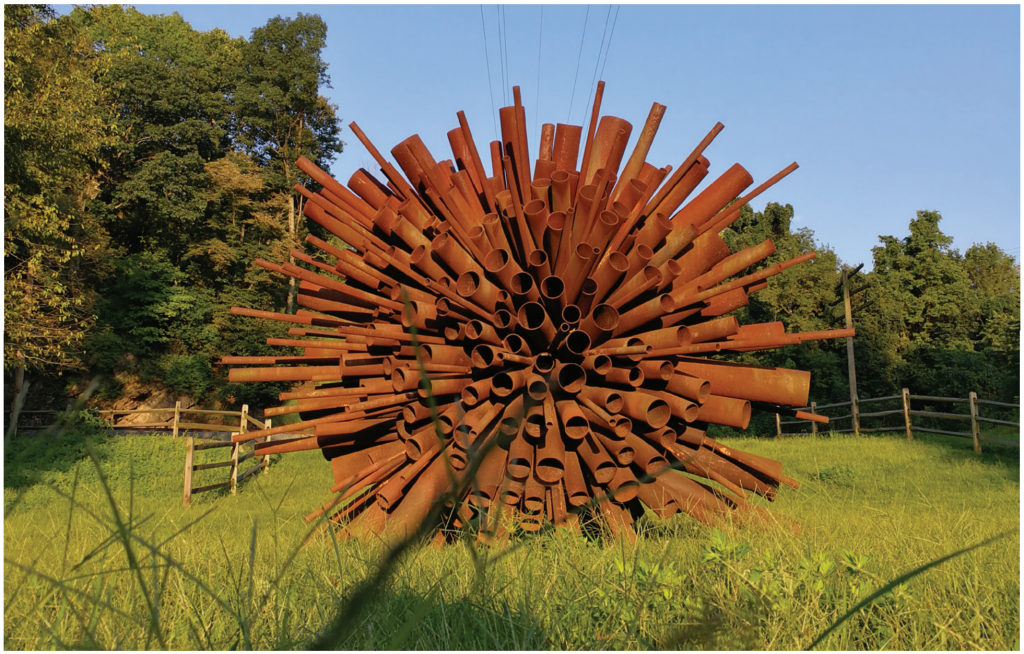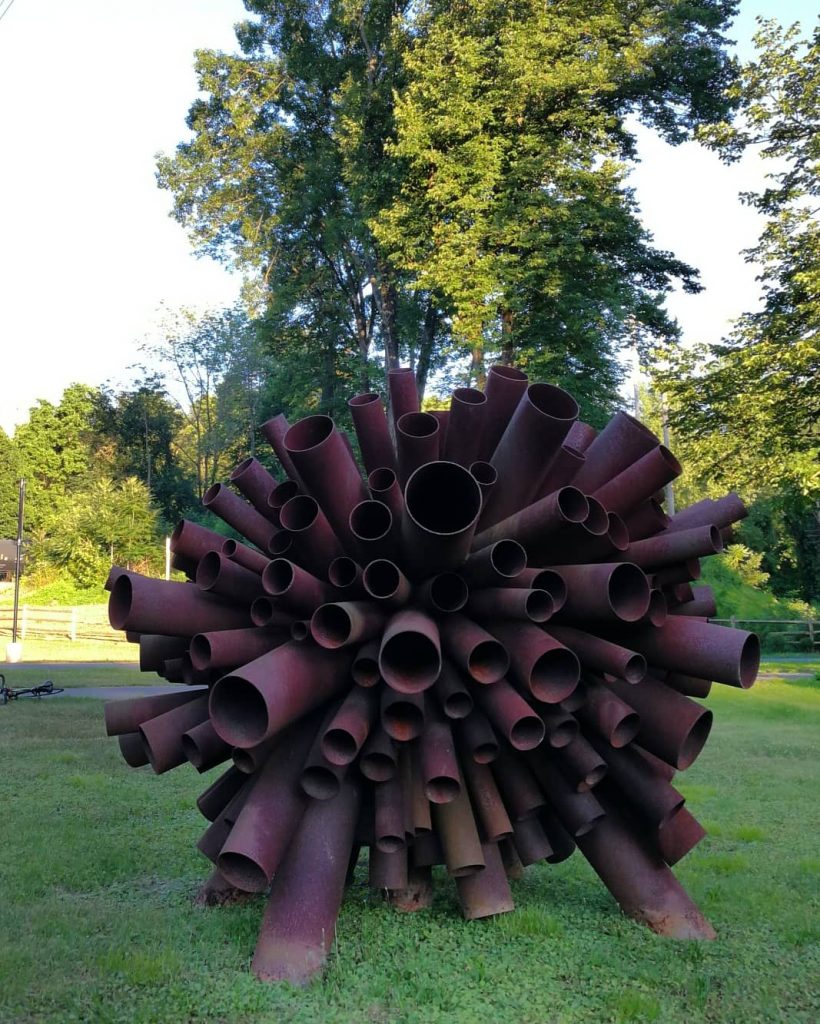Scrap metal, 2009

Part of Tobin’s New Nature series, this sculpture stands at 10′ x 13′ x 9′ and is located at Hugh Moore Park by the entrance to the National Canal Museum.
“Cylindrical steel tubes welded to create clustered effect. Such a plethora of steel cylinders, varying in size, visually evocative of the title, Corymb Exploding,” says art critic Shehbaz H. Safrani. “Derived from Latin, corymbus or cluster in botany is a flat-topped flower in which the individual stalks grow upward from various points on the main stem to approximate the same height.”

The Karl Stirner Arts Trail (KSAT) collection of 11 sculptures by Tobin is a generous gift from George Ball of Fordhook Farm/Burpee Gardening in Doylestown, Pennsylvania. The transportation and installation of the sculptures in Easton were funded by John Jaindl, VM Development Co., and anonymous donors. In addition to Corymb Exploding, the works include Sunflower (2003), also at Hugh Moore Park; Late Bronze Root (2009), Black Steel Root (2009), and Sprouts (2003) on the KSAT; Wreath (2009) at Scott Park; three pieces from Tobin’s 2009 Weeds series at Hackett Park; and two sculptures with locations to be determined.
Tobin was born in 1957 in Bucks County, Pennsylvania. He graduated with a B.S. in mathematics from Tulane University in 1979. His artistic expression has been in diverse media, including glass (blown and cast), bronze, steel, ceramics, as well as works on paper. He began in glass with studies and teaching fellowships at Pilchuck Glass School in Washington State and Penland School of Crafts in North Carolina. He was invited to work in glass in Murano, Italy, as the first foreigner permitted to operate a studio on the island.
In 1994 Tobin began to create works in bronze. Natural formations such as termite hills, sprouting plants, and tree root systems create wonder and are recurring themes and shapes for Tobin. He is best known for Trinity Root, inspired by the fallen sycamore tree that shielded Trinity Chapel during the devastation on 9/11 in New York City.
In 2016 he was the featured artist in the Jing’An International Sculpture Project in Shanghai, China, with an exhibit of 48 bronze and steel sculptures. His work has been in over 50 exhibits worldwide, and he is represented in over 50 collections and museums, including in Finland, Switzerland, Saudi Arabia, Washington, D.C., and Florida.
